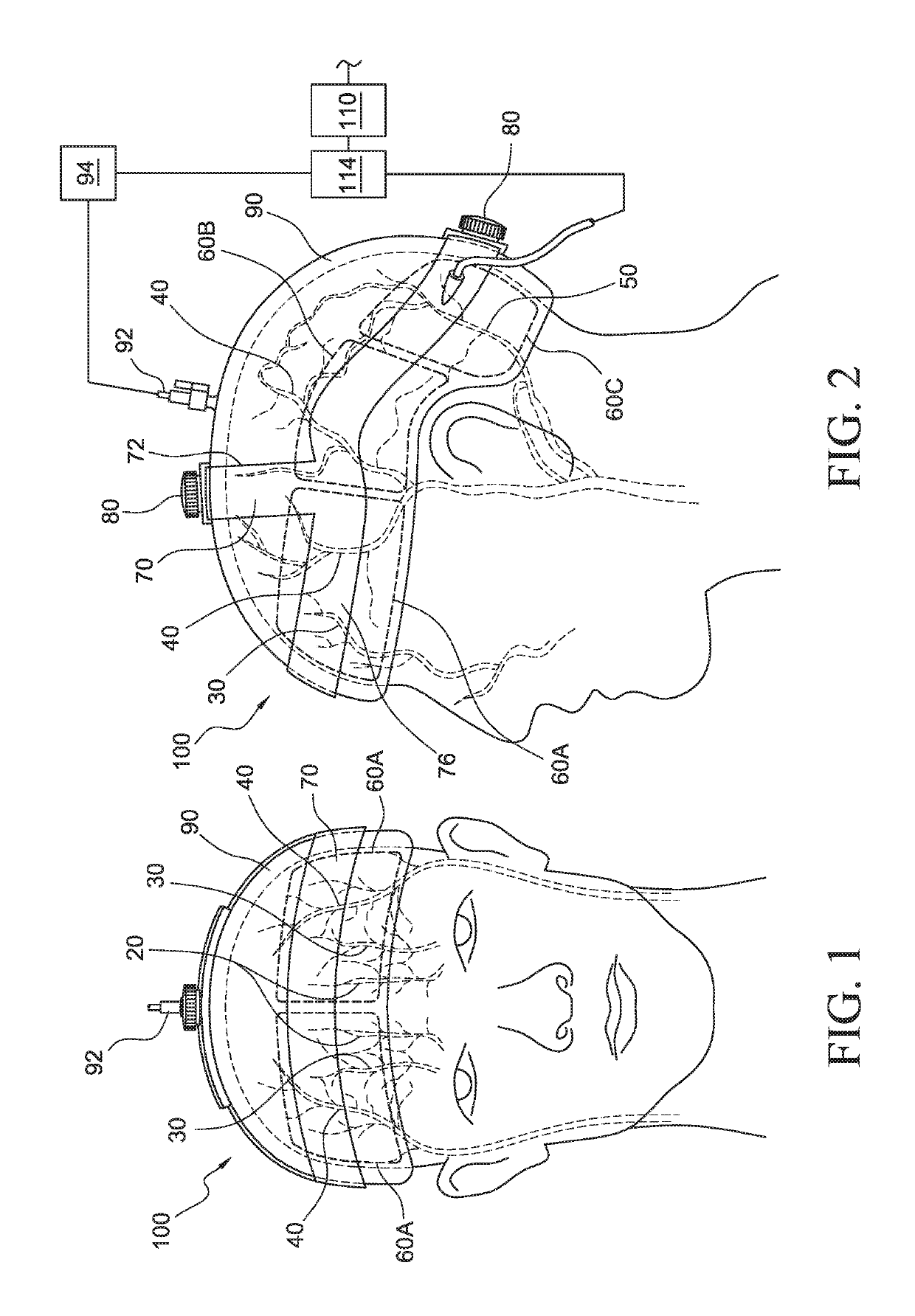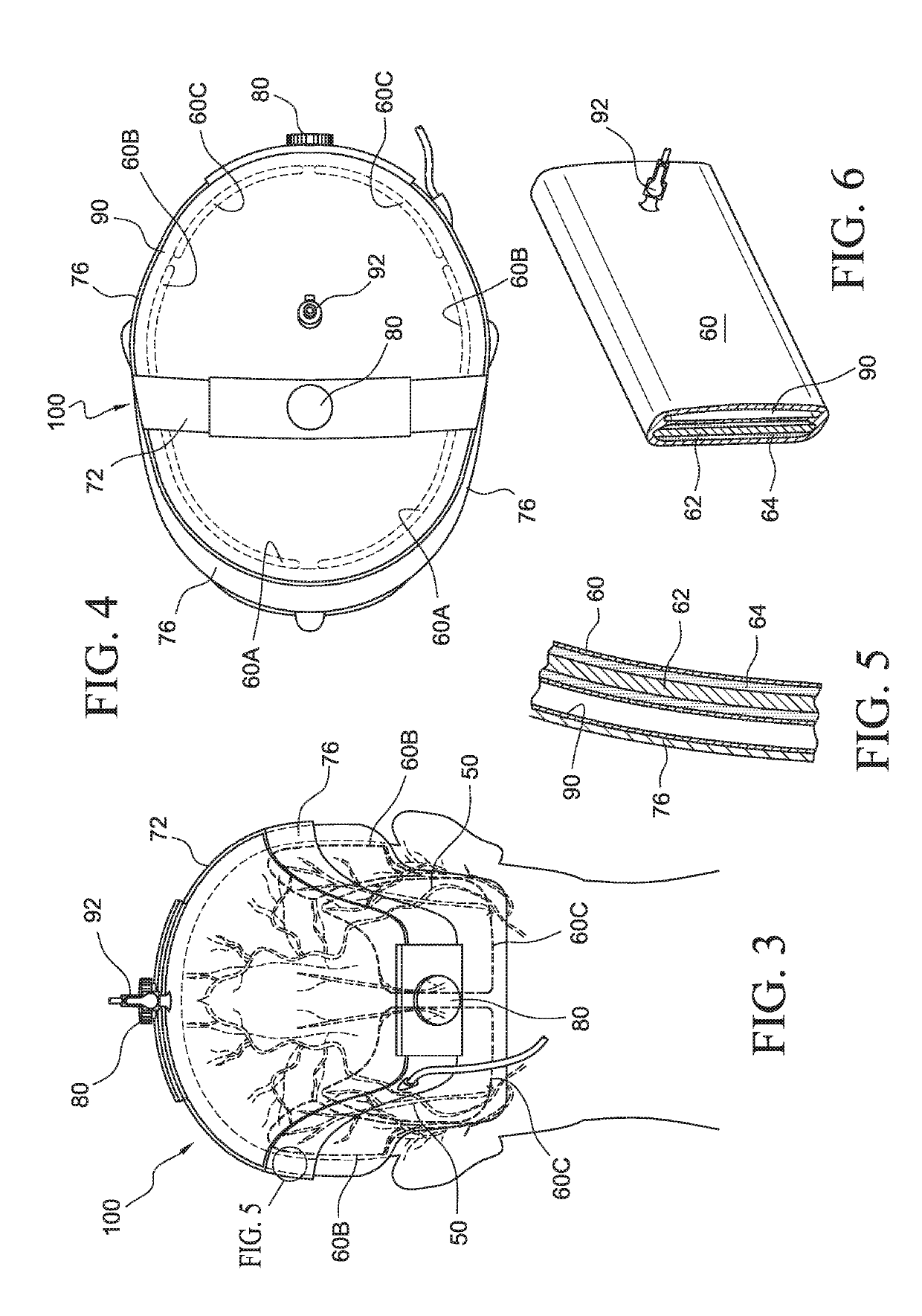Blood flow restricting headwear
- Summary
- Abstract
- Description
- Claims
- Application Information
AI Technical Summary
Benefits of technology
Problems solved by technology
Method used
Image
Examples
Embodiment Construction
[0017]Referring initially to FIGS. 1 to 3, a blood flow restricting apparatus 100 that attaches to a patient's head in accordance with a preferred embodiment of the present teachings is shown. The blood flow restricting apparatus 100 can include one or more cooling pads 60A, 60B, 60C located anteriorly, laterally, and posteriorly of a patient's head that are capable of being selectively or simultaneously pressed against nutrient vessels that supply the scalp with blood. The nutrient vessels targeted by the blood flow restricting apparatus 100 of the present teachings provide the majority of the blood flow to the scalp and include the supratrochlear arteries 20, the supraorbital arteries 30, the temporal arteries 40, and the occipital arteries 50. As will be discussed in more detail below, one or more pumps 94 can be implemented to supply external pressure to force the one or more cooling pads 60A, 60B, 60C against the targeted pairs of arteries 20, 30, 40, 50 on either side of the p...
PUM
 Login to View More
Login to View More Abstract
Description
Claims
Application Information
 Login to View More
Login to View More - R&D
- Intellectual Property
- Life Sciences
- Materials
- Tech Scout
- Unparalleled Data Quality
- Higher Quality Content
- 60% Fewer Hallucinations
Browse by: Latest US Patents, China's latest patents, Technical Efficacy Thesaurus, Application Domain, Technology Topic, Popular Technical Reports.
© 2025 PatSnap. All rights reserved.Legal|Privacy policy|Modern Slavery Act Transparency Statement|Sitemap|About US| Contact US: help@patsnap.com


